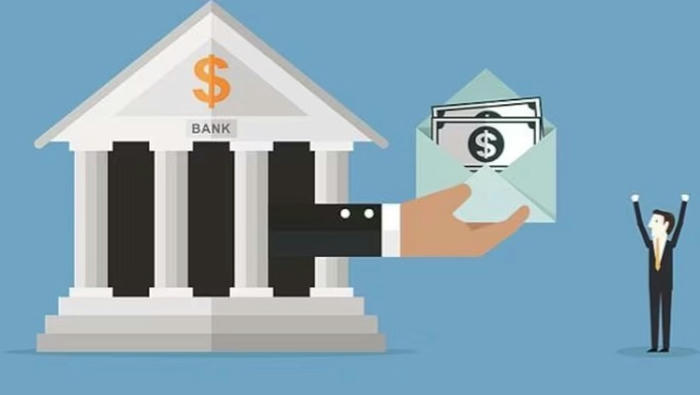Understanding Bank Loans: A Guide to Borrowing Smartly
Bank loans play a crucial role in personal finance, helping individuals and businesses access funds for major purchases, investments, or financial emergencies. While loans can provide significant financial relief, understanding their terms, risks, and benefits is essential to making informed decisions.
This article explores different types of bank loans, key factors to consider before borrowing, repayment strategies, and a real-life case study illustrating how a well-planned loan can lead to financial success.

What Is a Bank Loan?
A bank loan is a sum of money borrowed from a financial institution, which must be repaid over time with interest. Banks provide loans for various purposes, including home purchases, business expansion, education, and debt consolidation. The repayment terms and interest rates depend on factors such as credit history, income, and loan type.
Key components of a bank loan include:
Principal – The original amount borrowed.
Interest Rate – The cost of borrowing, expressed as a percentage of the principal.
Loan Term – The duration over which the loan must be repaid.
Collateral – An asset pledged as security for certain types of loans.
Monthly Payments – Fixed or variable payments made until the loan is fully repaid.
Types of Bank Loans
Banks offer different types of loans to cater to various financial needs. Understanding these options helps borrowers choose the most suitable loan based on their requirements.
1.Personal Loans
Personal loans are unsecured loans, meaning they do not require collateral. They can be used for various purposes, such as medical expenses, home renovations, or vacations.
Key Features:
Fixed or variable interest rates.
Repayment terms typically range from 12 to 60 months.
Approval depends on credit score and income.
Who Should Consider It?
Individuals with good credit seeking flexible funding options for personal expenses.
2.Home Loans (Mortgages)
Home loans help individuals purchase or refinance property. These loans are secured by the property itself, meaning the bank can seize the home if the borrower defaults.
Key Features:
Long repayment terms, typically 15 to 30 years.
Lower interest rates compared to unsecured loans.
Fixed or adjustable interest rate options.
Who Should Consider It?
Individuals planning to buy a home or refinance an existing mortgage.
3.Auto Loans
Auto loans help individuals finance the purchase of a car. Like home loans, these are secured loans, with the vehicle serving as collateral.
Key Features:
Loan terms typically range from 36 to 72 months.
Interest rates depend on credit score and vehicle type.
Lower interest rates for new cars compared to used cars.
Who Should Consider It?
Those looking to purchase a car without paying the full amount upfront.
4.Business Loans
Business loans provide funding for startups, expansions, or operational costs. These loans can be secured or unsecured, depending on the borrower’s financial history and business plan.
Key Features:
Short-term or long-term financing options.
Funds can be used for equipment, inventory, or payroll.
Banks may require a business plan for approval.
Who Should Consider It?
Entrepreneurs and business owners needing capital for growth or operations.
5.Student Loans
Student loans help cover tuition fees, living expenses, and educational costs. They typically offer lower interest rates and deferred repayment options.
Key Features:
Some loans allow repayment to start after graduation.
Government-backed loans often have lower interest rates.
Private loans may have stricter eligibility requirements.
Who Should Consider It?
Students and parents looking to finance higher education.

Factors to Consider Before Taking a Bank Loan
Borrowing money requires careful planning and assessment of financial stability. Consider the following factors before applying for a loan:
1.Purpose of the Loan
Clearly define why the loan is needed and ensure that borrowing aligns with financial goals.
2.Interest Rates
Compare interest rates from different banks to find the most affordable option. Lower rates reduce overall repayment costs.
3.Repayment Terms
Longer loan terms result in lower monthly payments but may lead to higher overall interest costs. Shorter terms save money on interest but require higher payments.
4.Credit Score
A higher credit score increases the likelihood of loan approval and better interest rates. Checking credit reports before applying can help borrowers understand their financial standing.
5.Fees and Charges
Banks may charge additional fees, such as processing fees, late payment penalties, or early repayment fees. Understanding these costs is essential.
6.Debt-to-Income Ratio
A lower debt-to-income ratio improves approval chances and ensures that monthly payments remain manageable.
Loan Repayment Strategies
Proper planning and disciplined repayment strategies can help borrowers manage their loans effectively.
1.Making Extra Payments
Paying more than the minimum amount reduces interest costs and shortens the loan term.
2.Refinancing
If interest rates drop or credit scores improve, refinancing a loan can lead to better terms and lower monthly payments.
3.Setting Up Automatic Payments
Automated payments help avoid missed deadlines, preventing late fees and credit score damage.
4.Budgeting for Repayments
Creating a budget ensures that loan payments are prioritized while managing other expenses.
Real-Life Case Study: Smart Borrowing for Financial Success
Case Study: How a Business Loan Helped Anna Expand Her Company
Background:
Anna, a 35-year-old entrepreneur, started a small bakery from her home. Demand for her products grew quickly, but limited space and equipment restricted production capacity. To expand, she needed additional funds for a commercial kitchen and hiring staff.
The Loan Process:
After researching different financing options, Anna applied for a business loan from a local bank. The bank required:
A business plan outlining projected revenue and expenses.
Proof of stable income from existing sales.
A personal credit check.
With a $50,000 loan approved, Anna secured a commercial kitchen space, upgraded her equipment, and hired two employees.
Results:
Within two years, Anna’s bakery doubled its revenue, repaid the loan ahead of schedule, and opened a second location. By using the loan strategically, she transformed her small business into a profitable enterprise.
Key Takeaways from Anna’s Story:
Proper planning ensures that loans contribute to financial growth.
Understanding repayment terms helps avoid financial strain.
Investing borrowed funds wisely can lead to long-term success.
Conclusion: Borrowing Responsibly for Financial Growth
Bank loans provide valuable financial support for personal and business needs. Whether used for buying a home, funding education, or expanding a business, loans can be powerful tools when managed correctly.
Careful evaluation of loan options, interest rates, and repayment strategies ensures that borrowing remains a financial advantage rather than a burden. Planning ahead and using funds wisely can turn a loan into a stepping stone for financial stability and success.
Understanding the responsibilities of borrowing and making informed choices can lead to a secure financial future with well-managed debt and growth opportunities.
